A garage cannot be built without waterproofing the roof, because it is the structural element of the structure that is designed to protect the interior from any influences, including atmospheric. Proper device will guarantee durability and integrity. Reliable protection can be ensured by following the instructions for waterproofing the roof of the garage with your own hands.
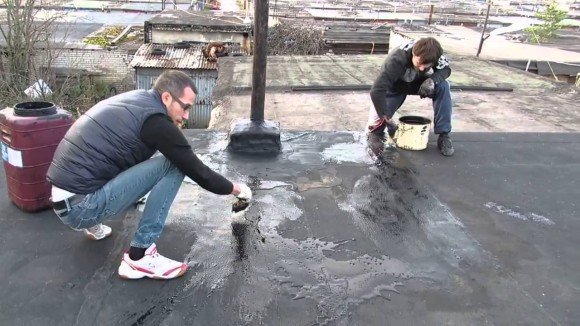
Content
Waterproofing requirements
The waterproofing layer must meet its original purpose, have certain characteristics and properties:
- Elasticity. This criterion will help prevent the destruction of the coating due to the occurrence of elastic deformations. A proper degree of elasticity will protect the surface even in cases where the loads are significant. The formation of deformations can also occur with small mechanical stresses, therefore this property of waterproofing is of particular importance for long-term operation.
- Resistant to moisture. Water vapor and water must not penetrate the protective layer of the waterproofing coating.
- Heat permeability. This property is responsible for maintaining a comfortable temperature inside the garage, maintaining heat.
- Durability. The waterproofing layer is often exposed to external loads, which are of a different nature. But high-quality material is able to withstand the occurrence of deformation processes.
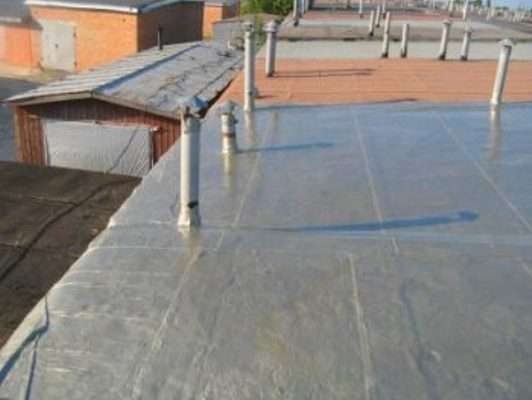
On the modern construction market, you can find a wide variety of both manufacturers and the types of waterproofing materials themselves. But you can’t count on the fact that any of the proposed options will meet all the requirements and possess the necessary properties. At the moment, the most popular among waterproofing materials recommended by specialists are membranes and polymer mastics.
Membrane systems
To begin with, we will understand what membrane waterproofing sheets are. Such materials have a thickness of about one to two millimeters. They consist of several layers that are hermetically bonded to each other. The length of the membrane is usually not more than 60 meters, but their width varies from 1 to 15 meters.
Waterproofing membranes differ in that they can be operated at different temperature ranges. They are able to withstand a wide range - from minus 60 to plus 120 degrees Celsius. Another positive feature of such a material is its resistance to ultraviolet rays. Their average lifespan is about 50 years. At the same time, they usually do not require repairs. This indicates the durability of waterproofing membranes.
Distinctive properties of polymer membrane waterproofing are its diffuse qualities, which affect the resistance to the formation of moisture under it. Another plus in choosing this material will be the conditions for its installation. Waterproofing can be installed at any air temperature and on the base of any humidity.
Waterproofing membranes can cope with their main tasks perfectly - they will not let moisture in and will not contribute to the accumulation of steam in the room.
The process of laying waterproofing membranes
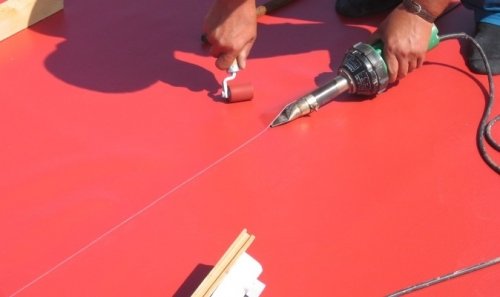
Such installation work does not seem complicated. Installation of waterproofing can be done with your own hands, observing some requirements. First, a prerequisite for installing the membrane is the presence of a ventilation gap. To do this, it is simply necessary to create a distance of about two and a half centimeters between the roof material and the waterproofing. If a heater is used in a roofing cake, then this gap must be increased to five centimeters.
When laying, the membrane is left without tension. Sufficiently free installation will help to avoid the formation of damage that can occur under various influences.
The membrane is a rolled material, which is overlapped during installation. For greater convenience, manufacturers marked the joints at the waterproofing material with a dashed line. It is best to glue the strips with waterproof tape. The membranes are mounted on a frame, which is made in advance, using iron brackets driven in by a construction stapler.
Polymer mastic
With a small roof area, polymer mastics are best suited. Such compositions have all the necessary requirements. This high-quality waterproofing material will protect the room perfectly.
The polymer liquid composition is applied without special labor directly to the surface of the garage roof. Do this using a special roller. Due to its consistency with mastic, it is convenient to cover the roof of any design. The shape and material will not complicate the process. Mastic can be waterproofed on a reinforced concrete, metal or wooden roof.
Polymer mastic is legendary. After installation, it will last more than a dozen years with virtually no repair work. The excellent strength characteristics of liquid polymer waterproofing will significantly reduce maintenance costs during its operation. The absence of seams when applying mastic allows you to create additional protection for the roof of the garage. Such installation eliminates the formation of "risk zones" on the roofing surface.
After applying the polymer mastic, a thin film is formed, which is able to provide proper resistance to the effects of weather and bright sunlight. The liquid waterproofing layer in practice manifests itself as a reliable tool that is resistant to various atmospheric phenomena.
The elasticity of such polymer mastic is ensured by its high-quality composition. It is able to maintain performance even in harsh climates, which are characterized by both low winter temperatures and high summer temperatures. Negative effects will not cause it to melt or deform.
Another hallmark of the resistance of such a material is the resistance of mastic waterproofing to varying degrees of vibration. When installing the garage roof, it is important that the coating does not change its properties when exposed to chemicals, including gasoline, alkalis, acids and oils. Polymer mastics meet these requirements.
Mastic application process
In order to apply liquid mastic formulations, you will need a special spray, or a paint brush, or a regular roller.
In the place where the corners and joints are formed, the most appropriate will be the use of a brush.
A protective film is formed after the composition is applied. This process is affected by air, which contributes to the vulcanization of the waterproofing layer. The result is a coating that is particularly durable. It is a bit like rubber and has excellent performance.
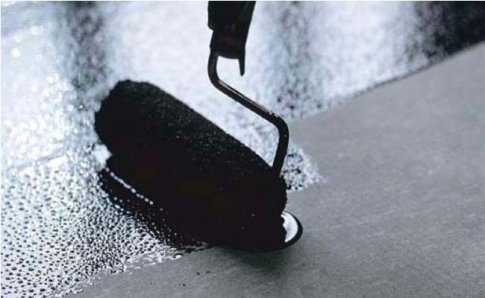
It is necessary to apply waterproofing polymer mastic in two layers. This will hide the cracks that are usually found on the surfaces of garage roofs.With this technology, additional treatment of the roof will not be required, which means that cash costs will be reduced. Any minor defects are not an obstacle to the use of polymer mastic as a waterproofing.
Some tips
- Sometimes, specialists use both types of waterproofing. The flat surface is first covered with a membrane, and in hard-to-reach places and joints, the roof surface is treated with liquid polymer mastic.
- Polymer waterproofing is easily applied to the surface of the roof of the garage, if you apply the spray method.
- Compared to bituminous rolled analogues, modern polymer waterproofing materials will not only provide reliable protection against moisture, but will also last quite a long time without additional repair.

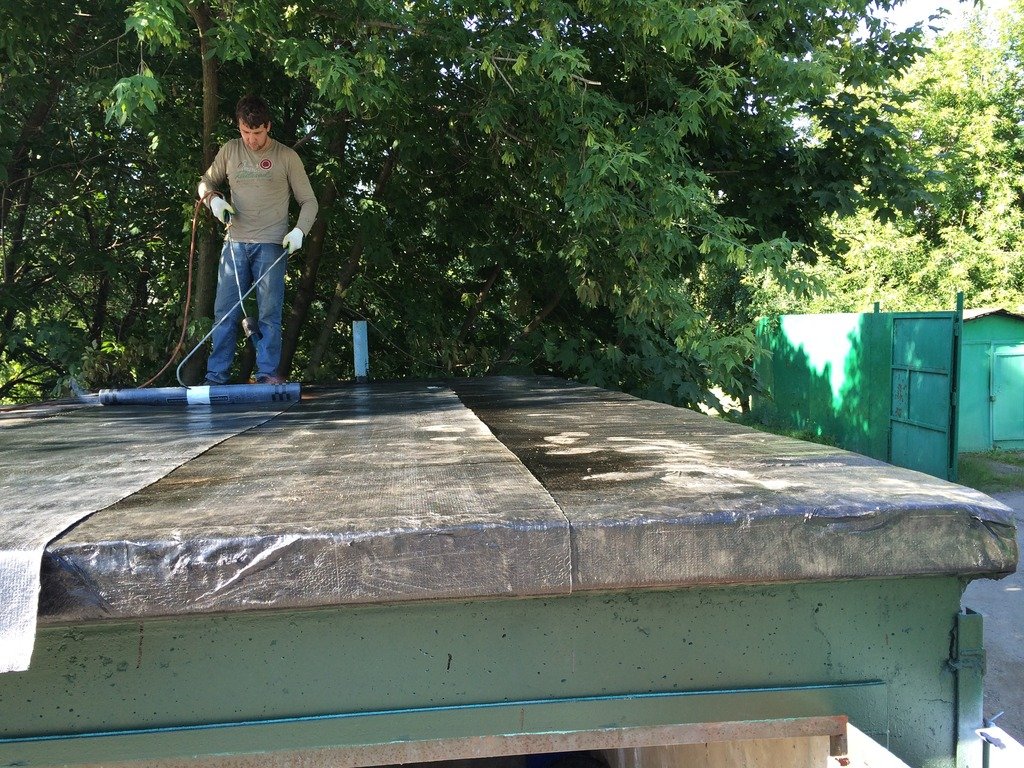



Alas, no comments yet. Be the first!